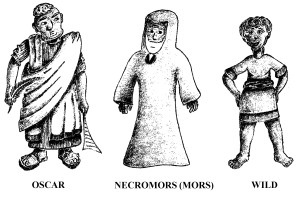Good ideas have to be able to stand up on their own merit, without crutches or a railing on which to hold. If one judged from the public outcry and the titles of the articles below, it might at first seem that egalitarianism, conformity, and the demands of the bottom line have all but ended the era of genius.
Where Have All the Geniuses Gone?
Are We Running Out Of Scientific Geniuses?
The democratization of genius has not snuffed them out. They are alive and well. Some are thriving, some may be hiding, but they are much harder than ever to find amidst the noise as they go quietly about their way giving facelifts to forgotten paradigms, forging new theories, and shirking popular but misguided concepts altogether.
A simple analogy from Biology 101 will explain the situation.
Monarch Butterfly: A poisonous insect colorfully marked in orange and black that warns predators. Monarch butterflies are the modern day equivalents of geniuses in modern day society, those imbued with both a natural aptitude for greatness and the environmental resources to make it a reality. Milkweed, after all, doesn’t just let itself get eaten.
Viceroy Butterfly: A tasty and delicious insect that looks like the Monarch Butterfly and has survived due to its ability to mimic the appearance of the toxic Monarch Butterfly. Viceroy Butterflies are the modern day equivalents of geniuses by proxy. They have no natural aptitude for greatness, and must work two to three times as hard to prove themselves. For starters, they have to make sure that they are running in the right pack (e.g. actual Monarch Butterflies). Secondly, they have to make sure that not too many of their own kind are running in the same pack with them (e.g. Viceroy Butterflies). There are no herds of wandering Viceroy Butterflies, for obvious reasons.
Predators: Butterflies have all sorts of predators that prey on them. These include any number of birds, frogs, monkeys, marketers, international conglomerates, lobbyists, and politicians.
Like the Monarch Butterfly, the genius is a relatively defenseless critter through and through, though if attacked the predator learns a harsh lesson. Unlike the Monarch Butterfly, the Viceroy Butterfly and genius by proxy are completely defenseless. Whenever they grow too large in number, well… a great die out and buffet ensues.
What does this have to do with intelligence and foresight? A famous genius by the name of Isaac Newton once quipped, “If I have seen a little further, it is by standing on the shoulders of giants.”
I think he should have added, “…and not merely by hanging on to their coattails.”



